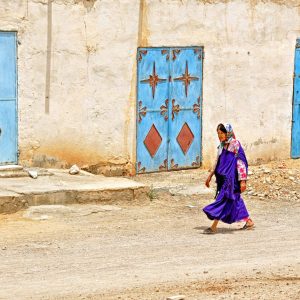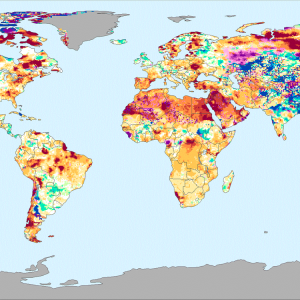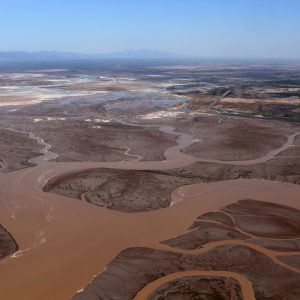Global HotSpots H2O – October 23, 2016
From the Syrian conflict, to protests in Zimbabwe, Tunisia and India, to a deep drought destabilizing South Africa, water is playing a significant role in global civil unrest.
HotSpots H2O from Circle of Blue’s award-winning team of journalists examines regions, populations, and countries that are most at risk from water-related unrest and conflict. It reveals the challenges individuals confront — and the solutions they discover — as they strive to build resilient communities.
HotSpots H2O Podcast: India and Pakistan’s Struggle Over Water
Tensions are heating up between India and Pakistan over key water sources in Kashmir, with India threatening to revoke the nearly 60-year-old Indus Water Treaty.
Tune into a timely HotSpots H2O podcast conversation with Michael Kugelman, India authority at the Woodrow Wilson Center, to discuss the Indus Water Treaty, Kashmir, and the importance of the treaty on India-Pakistan relations.
Subscribe to Circle of Blue’s HotSpots H20 podcast on iTunes. Full transcript of podcast available here.
Tunisia: A Thirst Uprising?
Nearly six years after the Arab Spring began in Tunisia, the fragile democracy of a nation ruled for nearly 24 years by dictator Zine El Abidine Ben Ali is still experiencing growing pains. Unemployment and civil unrest continue to plague the nation’s arid interior.
Dramatic swings in seasonal water supplies, a problem often ignored by the ousted Ben Ali regime, are threatening to bring about a revolution stoked by thirst. But this is not the first time that water access has played a role in civil unrest in the mostly desert country.
Professor Mohamed Larbi Bouguerra, an associate director at the French National Center for Scientific Research (CNRS), noted that the epicenter of Tunisia’s Arab Spring, Sidi Bouzid, lies in the middle of a water-stressed region. “It was in the territories the most disadvantaged in terms of water, that the Tunisia revolution began,” Bouguerra wrote in early 2015.
Read Circle of Blue’s full HotSpot H20 coverage of Tunisia’s Thirst Uprising: A Nation on the Edge.
Mapping Hotspots with iSciences
As the world’s weather and climate become more erratic, so too does predicting how much freshwater will be available at any given time or location for human and ecosystem use. Detecting emerging global hotspots where water may serve as a trigger for civil unrest or even intense conflict takes a keen sense of situational awareness and, in many cases, mountains of data.
iSciences provides one perspective. The an Ann Arbor-based research group, uses its Water Security Indicator Model (WSIM) to help governments, agriculturalists, and water-hungry businesses recognize global trends in water availability and better plan and manage water resources. Tools like this — and many others — help identify where water could aggravate existing social stress points and possibly contribute to humanitarian crises worldwide.
Circle of Blue’s east coast correspondent based in New York. He specializes on water conflict and the water-food-energy nexus. He previously worked as a political risk analyst covering equatorial Africa’s energy sector, and sustainable development in sub-Saharan Africa. Contact: Cody.Pope@circleofblue.org





